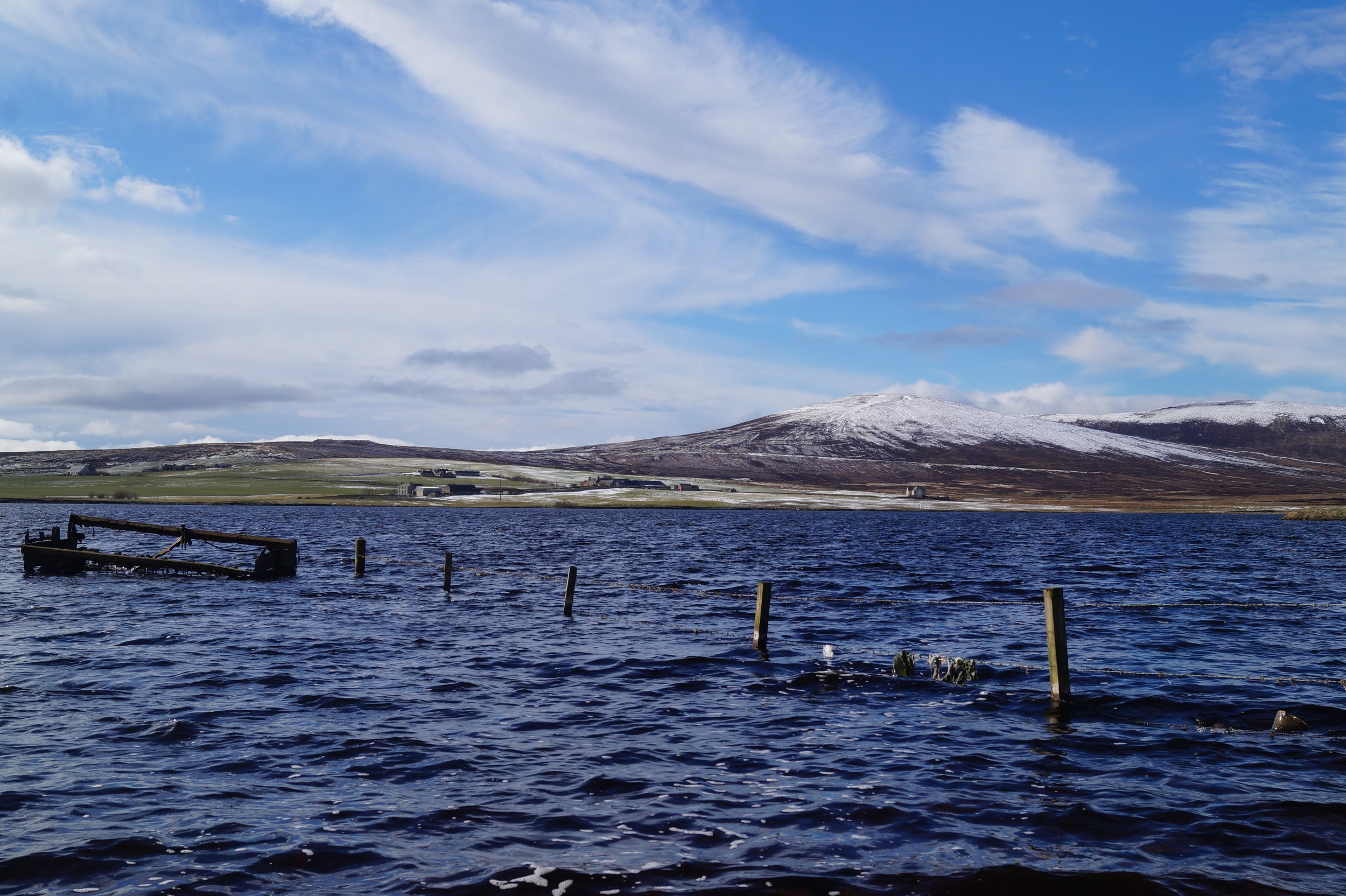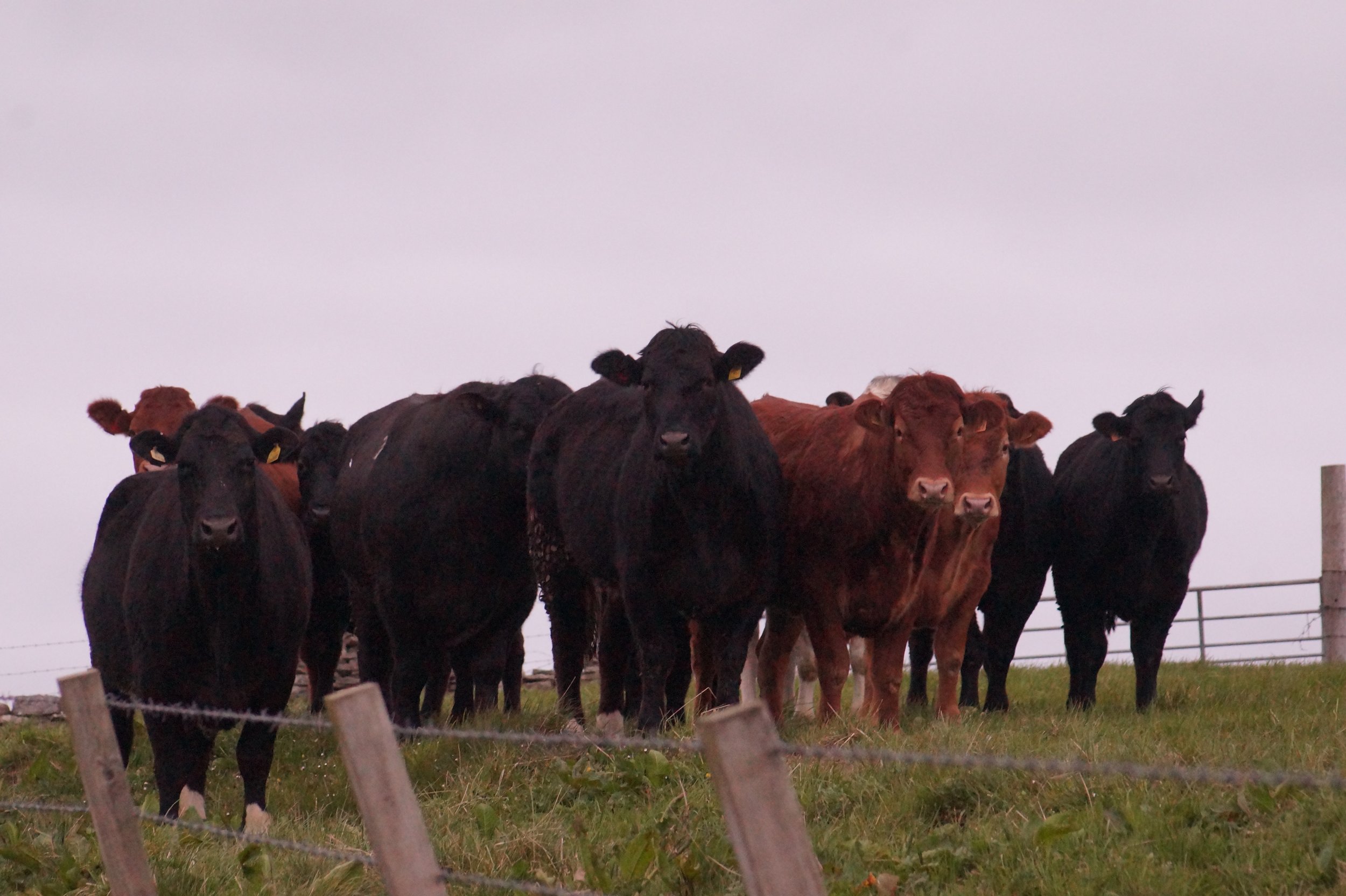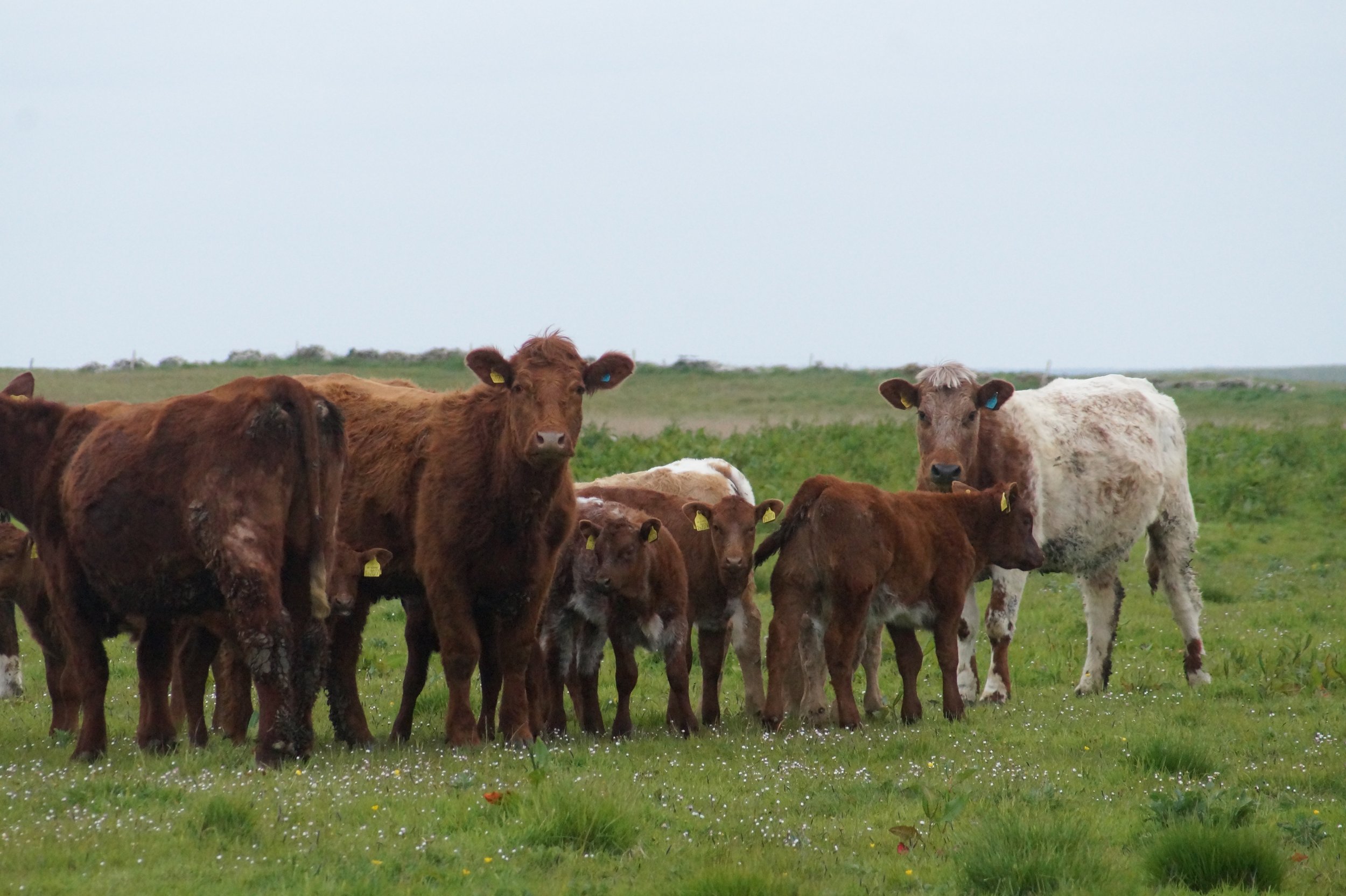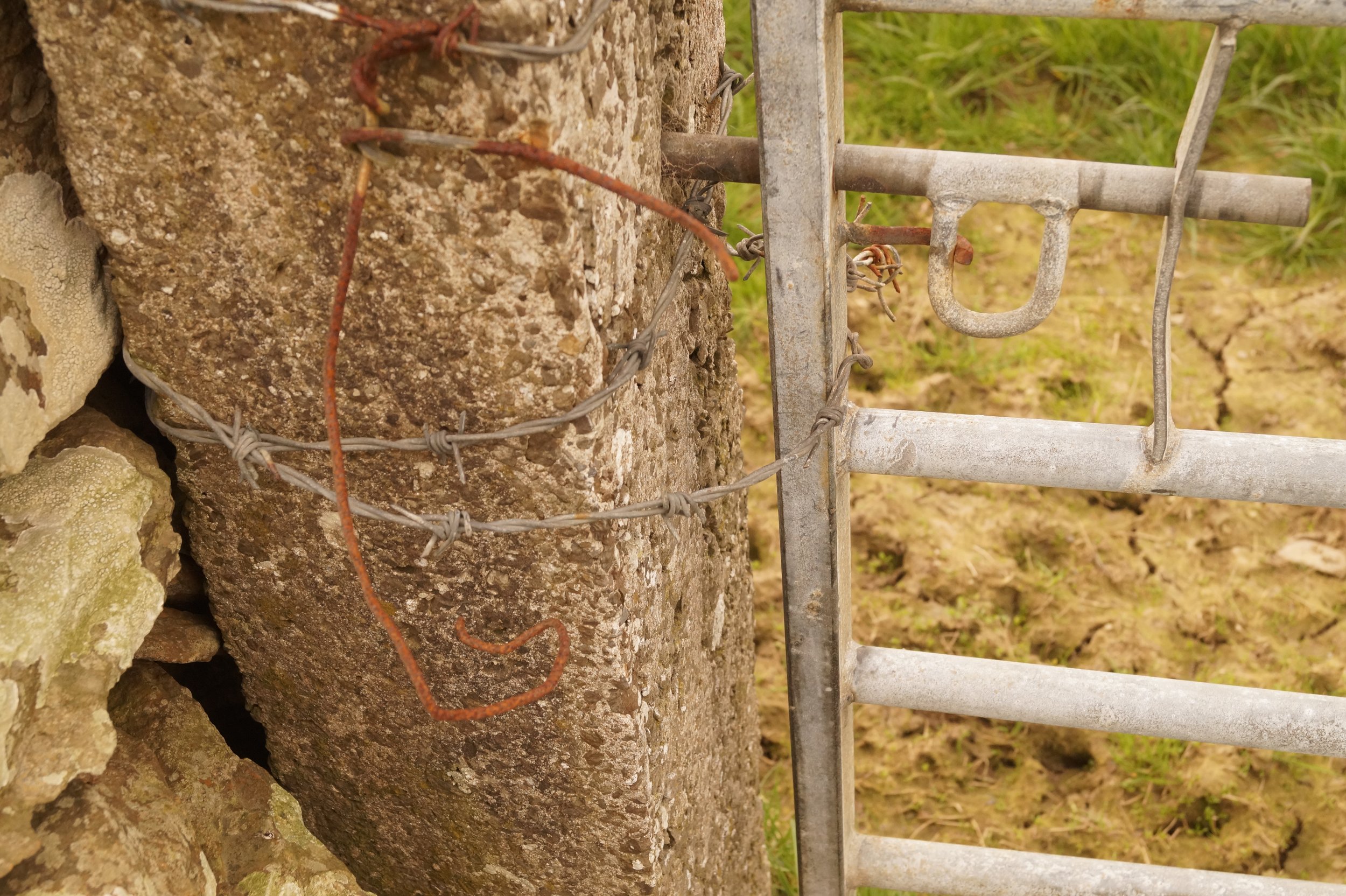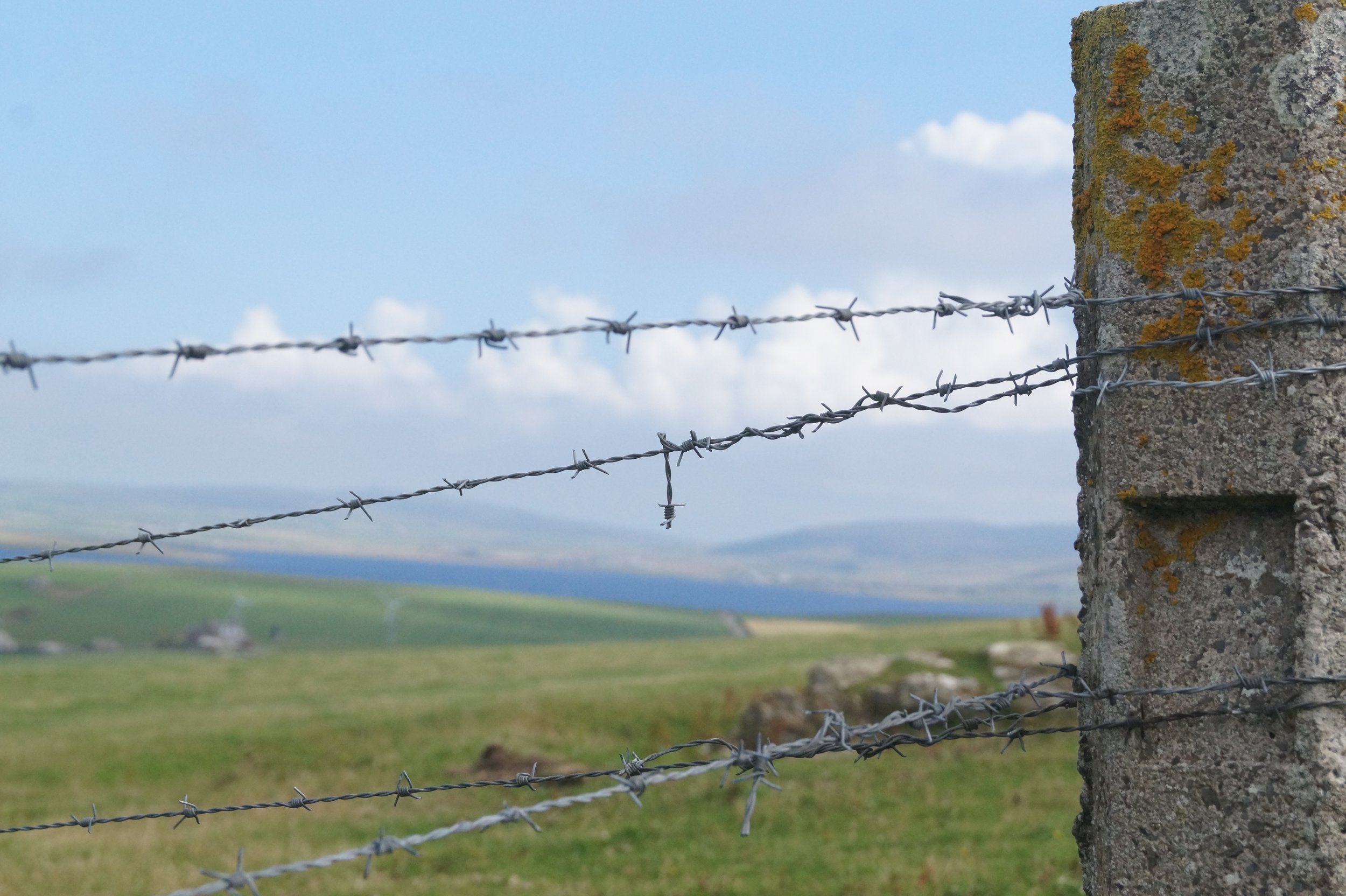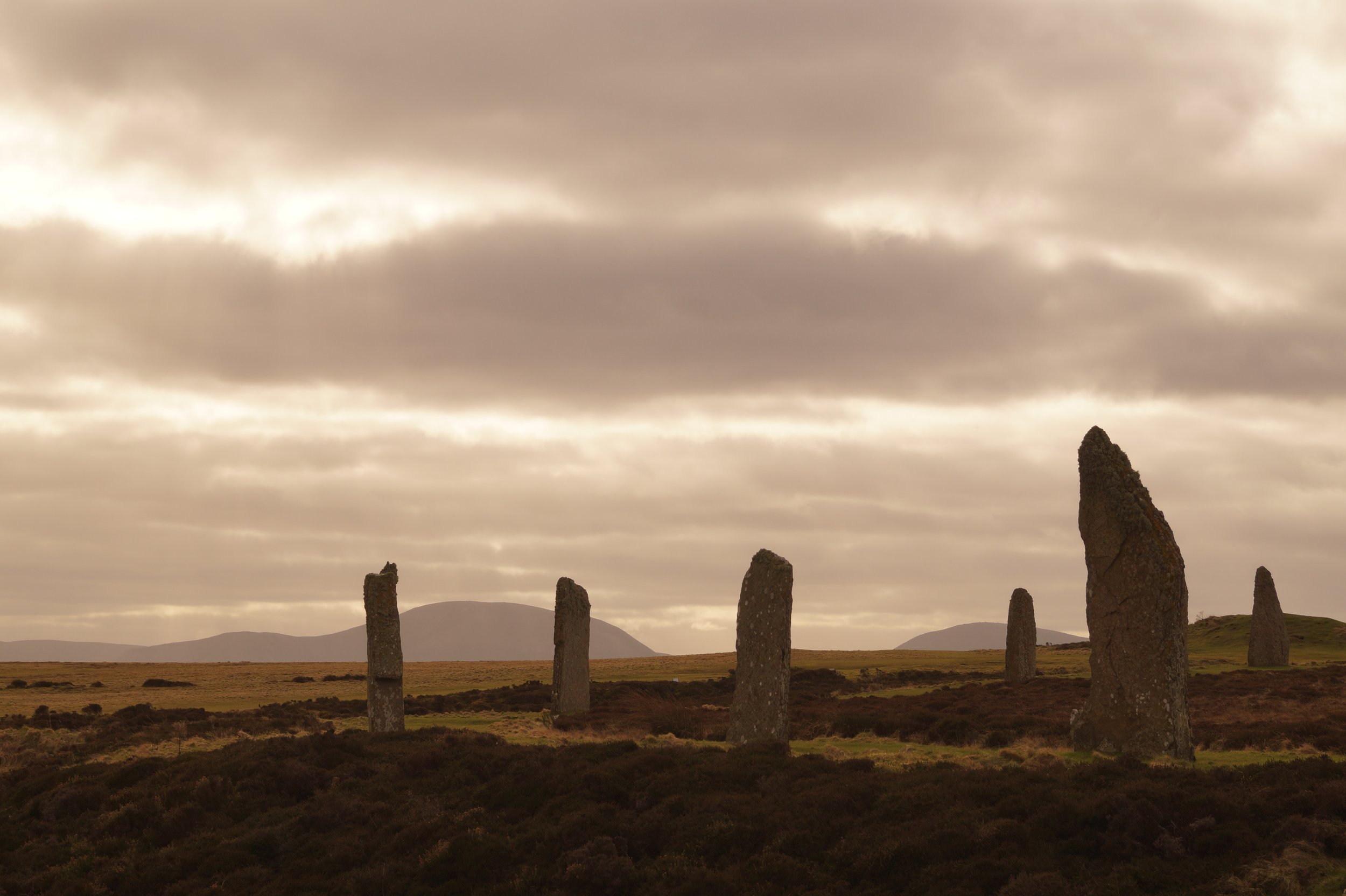Navigating Udal Law in Orkney
Adam Robertson Charlton
Orkney is a low lying land, a waterscape between the tidal superpower of the Atlantic, and the blue currents of the North Sea. Around 8000 years ago, neolithic humans arrived at Dunnet Head, as far north as it is possible to be, while keeping your feet on mainland Britain. Whether they gazed on the red cliffs of Hoy at that moment, or had to wait for the mist in the Pentland Firth to eddy away, we do not know.
What we do know is they kept north. To Hoy and the Orkney Mainland first, we presume, but certainly to Papa Westray, in the high north of the archipelago, where they left their earliest evidence in Orkney. To be human is to roam.
So I was only being human, your honour, when I ambled along the foreshore of that tidal loch in Orkney, and was reprimanded, to my surprise, by its owner.
Orkney is not an easy place to roam freely. Its abundant cattle are kept in check by many miles of barbed wire and electric fencing. Indeed, Orkney is the only place that I have ever encountered an electric barbed wire fence, hooked up to the mains.
I had therefore decided to walk the road on this occasion. My route traced the shallow north of Loch Stenness, where sea trout hunt right up to the buttercups, before heading past the Ring of Brodgar, Orkney’s number one tourist attraction. Raised 5000 years ago, these stones form a circle at the narrow point between the two largest lochs in Orkney. Their placement suggests an early appreciation for the interplay between land and water which defines this place.
In the summer, coach loads of tourists, dressed in translucent ponchos and looking like half unwrapped peperamis, descend on Brodgar. It was in an effort to evade them that I spied a route through a bank of irises, and slithered onto the rocky shore of the loch.
The tide was low, allowing plenty of space, I thought, to traverse the ‘tidal zone’; the space between the high and low water mark, which in Britain is typically owned by the Crown. It was from these seaweedy grounds that my surprise arose at being halted in a firm, male tone.
Standing atop the bank in a wide brimmed hat, he told me that I was on private land. This seemed improbable to me, but, not in the mood for an argument, I demurely retraced my footsteps. And, as it turns out, he was right. Kind of.
Because Orkney was ruled by Norwegian earls until 1472, land ownership here is subject to something called ‘udal law’.
Udal law is derived from old Norse legal codes. While British and Scottish law now supersedes much of it, the Crown does not have a claim to the foreshore in Orkney. Coastal landowners therefore own the shore to ‘the lowest ebb’, an imprecise and highly localised definition.
This is actually just one in a list of imprecise definitions, which include ‘as far as a stone can be thrown’, ‘as deep as a horse can be waded’, or ‘the distance at which a salmon net can be cast’.
Rather than all land originating as the possession of the monarch, as in a feudal system, udal law assigns origional property rights to the first person to enclose a piece of land. This tradition of enclosure lives on in the fastidious approach to fencing in Orkney.
Yet owning the foreshore is not just a quirky hangover from the Viking era. It has been key to Orkney’s economic development. During the Industrial Revolution, kelp - a seaweed which grows in great forests around Orkney - became extremely valuable. Kelp ash was used to make soap, glass, fertilisers and gunpowder. As the industry peaked in the early 1800s, Orkney was exporting 3000 tonnes of kelp ash per year.
Owning the foreshore allowed landowners to claim the seaweed strewn upon it. Perhaps there is an inherited twitchiness about strangers and neighbours poking around on your stretch of the coast.
At this point, you might be thinking, OK, this udal business is all very well, but Orkney is still part of Scotland, and Scotland has the right to roam, doesn’t it?
Well yes, in theory. Orkney is not exempt from Scotland’s Land Reform Act of 2003, which guarantees that right to roam. The reality, however, is complex. Orkeny does have some good coastal paths. Most are atop cliffs. The St Magnus Way includes two coastal chunks, one through an RSPB reserve and the other, in part, along a road.
Away from the sea, the Orkney interior is stringently enclosed, dense with livestock and, ‘what about the right to roam, mate?’, is not an easy line to deliver to a farmer who thinks his cows are about to trample you to death and bankrupt him in court.
Even places with established access rights can be unestablished. One tidal island in particular is an infamous bastion against the right to roam. Fences are adorned with inaccurate ‘private property’ and ‘keep out’ signs.
Those that have had the misfortune of meeting their author all tell a similar tale of hostility and intimidation. Few people are willing to assert their rights in the face of such determined resistance. Without enforcement, rights can be ignored.
Roaming in Orkney does feel different to the rest of Scotland. Perhaps the fact that Orkney is without a Gaelic tradition means there is no cultural memory of collective land rights. Udal law certainly plays its part, although Norway, ground zero for udal law, has among the most progressive rights to roam in Europe.
Norwegians take great pride in their ‘allemannsretten’ or ‘every man’s right’, which they claim has ancient roots. Why Orkney and Norway trod different paths here is hard to say. Private property is often enforced with particular gusto in a colony, compared to the metropol. Then again, it could simply be a question of population density.
Recently, the Orkney Islands Council voted to explore closer ties with Norway. Will this herald a spring tide for the right to roam, or will landowners cleave to their old norse ways? If I had to guess, I doubt the Earls of Orkney will be spinning in their tombs anytime soon.
